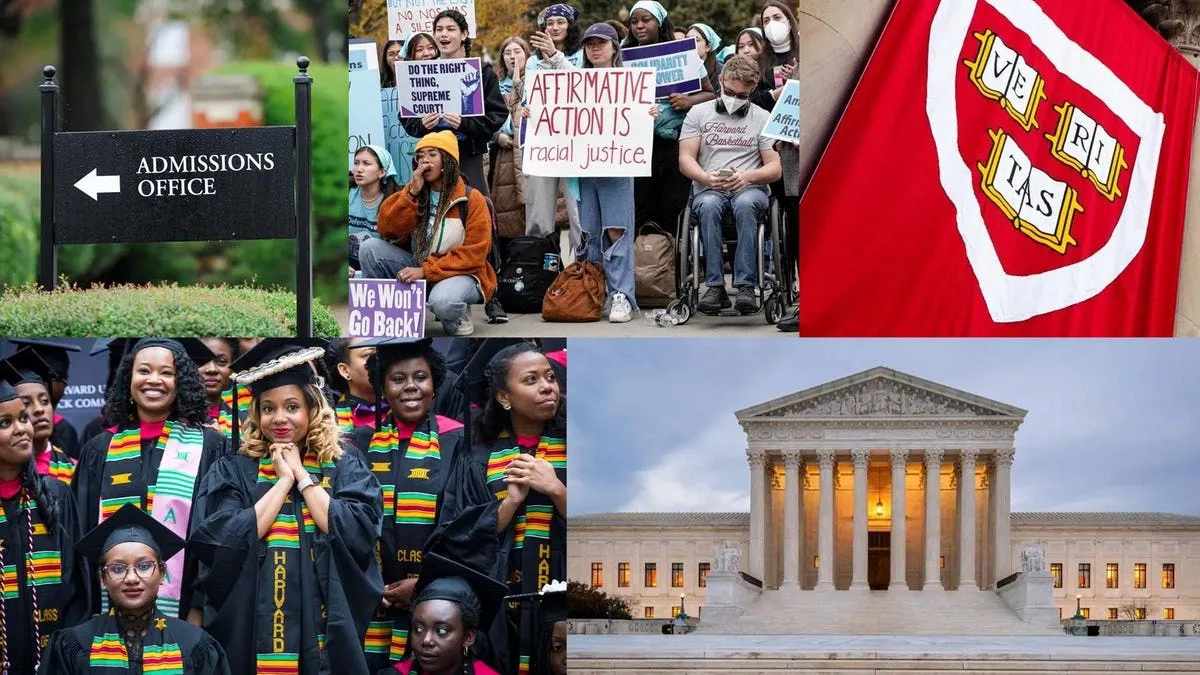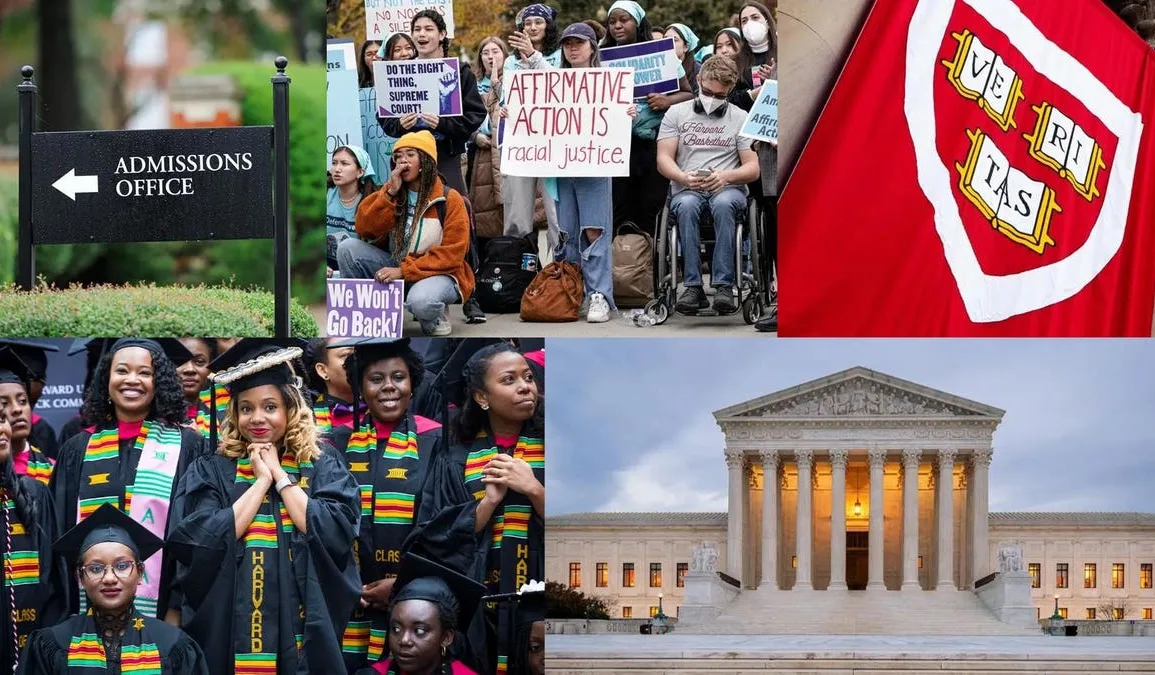
The Supreme Court’s decision on affirmative action doesn’t just affect students applying to colleges and universities seeking to shape their student bodies. Business leaders must change how their companies recruit, hire and retain top talent.
By Corinne Lestch, Forbes Staff
The Supreme Court ruling rejecting affirmative action in college admissions will upend how America’s top schools shape their student bodies, where prospective students apply, and which programs and campus initiatives receive funding.
The Court’s decision most immediately affects institutions of higher education — and sends a clear message to the mostly Black and Hispanic students who have been shut out of elite schools. It also forces companies to reconsider their recruiting and hiring practices, rethink diversity, equity and inclusion efforts, and overhaul corporate culture to better achieve business goals.
How Higher Ed Could Change
The justices’ 6-3 decision takes away universities’ established diversity tools and procedures by insisting that applicants “must be treated based on his or her experiences as an individual—not on the basis of race,” as Chief Justice John Roberts wrote in his majority opinion.
Justice Ketanji Brown Jackson, one of the three dissenting liberal judges, argued that the decision “imposes a superficial rule of race-blindness on the nation.”
The future makeup of elite college campuses could affect the creation and funding for the expansion of African American studies programs, initiatives focused on race, and even the faculty who get hired, writes Shaun Harper, provost professor at the University of Southern California.
If fewer Black and brown students apply to what Harper, a Forbes DEI contributor, calls “predominantly white institutions,” it could increasingly marginalize the remaining Black applicants. “A student could be the only Black woman in an academic major (and therefore in every class she takes), or that a professional could be the only Latino person in the campus unit where she works,” Harper writes.
How Corporate DEI Efforts Could Change
Nixing affirmative action practices in schools could also have a chilling effect on DEI efforts in the business world, where employers often take cues from schools they recruit from. Companies will have to reprioritize their own diversity, equity, and inclusion efforts to ensure they’re recruiting and retaining top talent.
Still, there is plenty of evidence to suggest that companies, eager to demonstrate their commitment to diversity, will set their own policies—or double down on the ones they already have. After all, a more diverse workforce means better business, according to marketing expert and Forbes contributor Sonia Thompson.
“Representative teams are better equipped to serve a diverse customer base due to lived experiences, broader perspectives and a deeper degree of empathy for the people they serve,” Thompson writes.
For example, Mattel, the toy company that makes Hot Wheels, Fisher-Price, and American Doll, called on its diverse workforce to help re-establish Barbie for a more inclusive-minded generation. The company consulted its Asian and Pacific Islander Employee Resource Group to help develop the Barbie Lunar New Year Doll, released in January. And REI, the outdoor gear and apparel company, turned to identity-group partners to develop its size and gender-inclusive Trailmade line.
“What sets companies like REI and Mattel apart, is that they collaborate and co-design with identity-group partners rather than design solely on their behalf,” writes Corinne Post, a management and leadership professor at Villanova School of Business.
Whether these DEI initiatives can continue effectively may depend on the sources of talent that companies traditionally draw from — America’s top colleges and universities.
How Students’ Choices Can Change
Some students from under-represented groups may be discouraged from applying to highly selective universities out of fear they won’t be desirable candidates. That burden could likely be a boon for Historically Black Colleges and Universities, writes Marybeth Gasman, distinguished professor at the Graduate School of Education at Rutgers University.
HBCU leaders will emphasize “that African American students are wanted and valued at their institutions — further touting the quality of education and sense of belonging that HBCUs offer,” according to Gasman, a Forbes Education contributor.
Howard University in Washington, D.C, and Vice President Kamala Harris’s alma mater, has more Black undergraduates (nearly 6,000) than all eight Ivy League schools combined (5,063).
“HBCUs will continue recruiting and admitting academically promising Black Americans,” Harper writes, noting that the Ivies and other elite colleges hadn’t done a great job of diversifying even before the Supreme Court got rid of affirmative action. Top schools can still find “extraordinarily talented, incontestably deserving Black applicants — but like HBCUs, they have to want them,” he adds.
U.S. service academies notably will not be affected by the Court’s decision, “in light of the potentially distinct interests that military academies may present,” Chief Justice Roberts wrote in his decision.
Roberts did not specify these distinct interests, but our Education contributor Michael T. Nietzel, a former university president himself, writes that “it’s hard to imagine he meant anything other than the importance of a racially integrated group of officers, particularly given the large number of racial minorities in the military’s enlisted ranks.”
The number of cadets in the U.S. Military Academy in West Point, N.Y., who identify with a racial or ethnic minority group jumped from 20% in 2000 to 36% in 2021, according to federal education data.
What Takes The Place Of Affirmative Action?
In the short term, colleges and universities may continue to downplay standardized test scores and focus on geographic diversity and admissions essays, where students can describe for themselves how race played a role in their lives.
Some diversity advocates hope that elite schools will drop legacy admissions, which overwhelmingly favor the children of white alumni. Texas A&M banned the practice in 2004, and Amherst, MIT, UC Berkeley, Johns Hopkins, CalTechand University of Washington do not consider legacy status in admissions.
The ruling may prompt schools and companies to usher in a new era of policies around diversity. Much remains to be seen, but the debate on how to best ensure equal access in higher education will continue.
The biggest question may be who, exactly, gets to participate in the debates — at least in the hallowed halls of America’s most prestigious universities.



